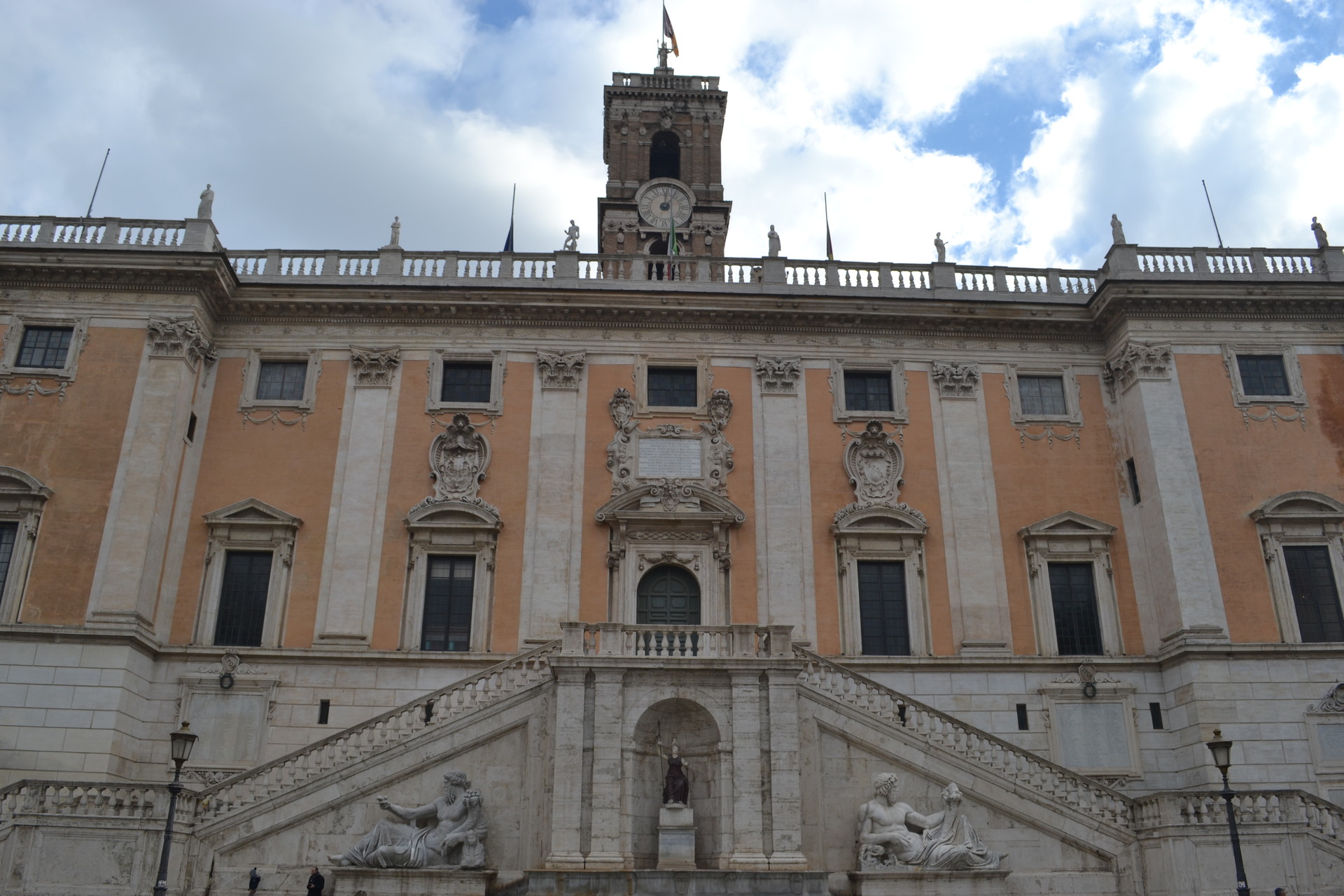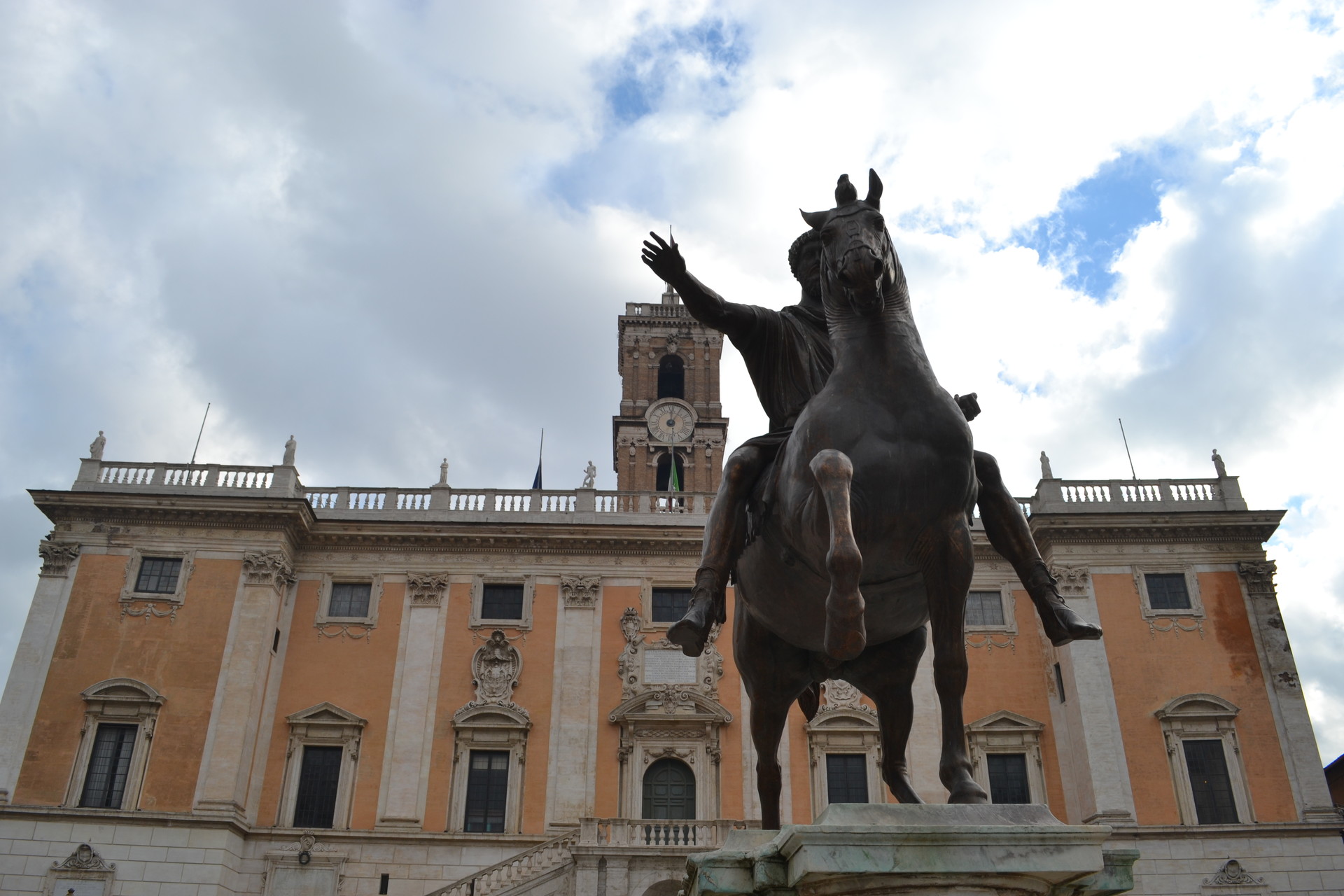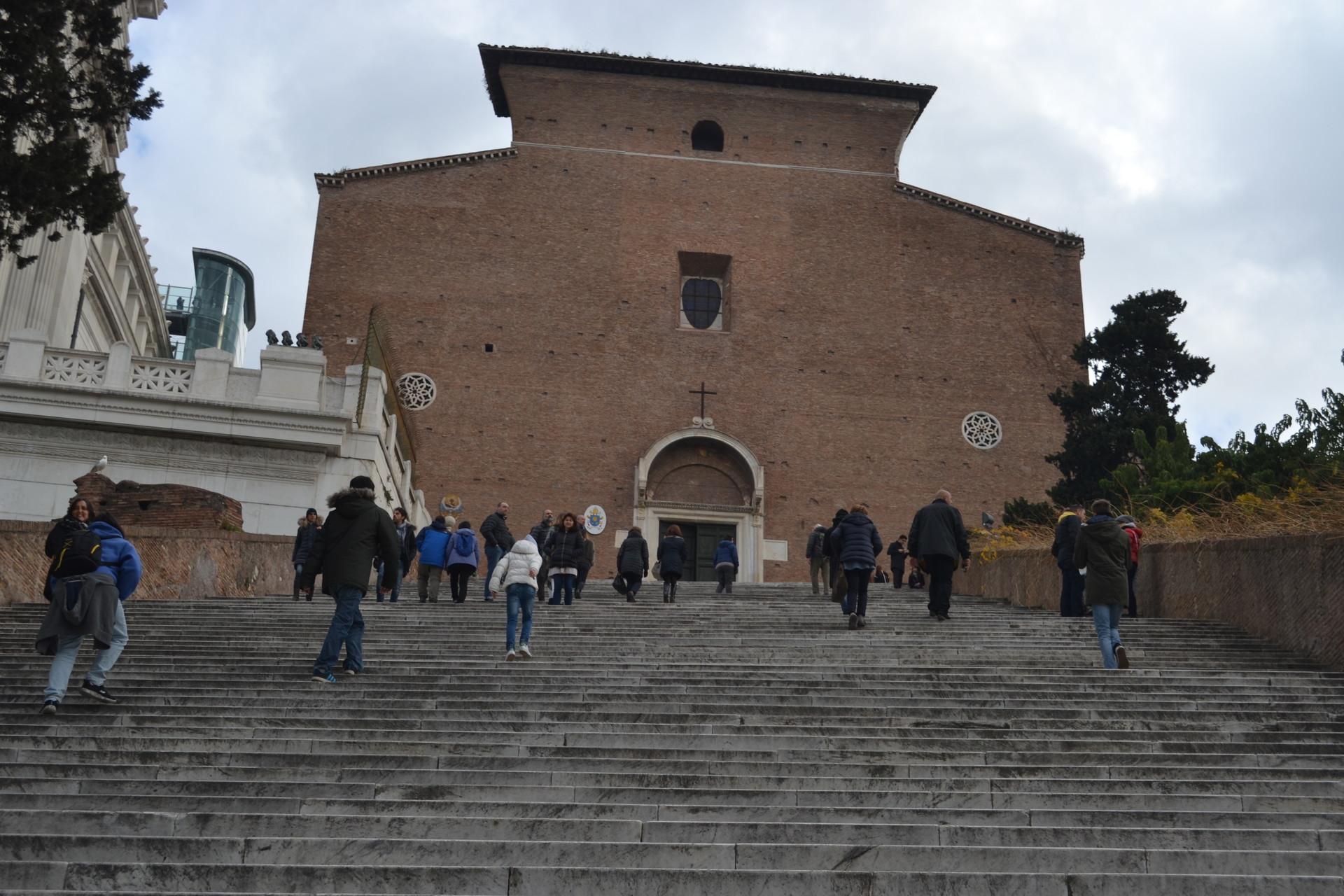The Capitoline - 2/7 Hills of Rome
The Capitoline Hill is known to be one of the most important out of the Seven Hills of Rome. It may be one of the smallest but it certainly contains some of the most important history Rome carries.
One of the “problems” with living in Rome is that you have most certainly been to some beautiful places but do not realize the amount of history behind them. I remember I have been to the Capitoline hill, called “Capitolino” or “il Campidoglio” a few times before actually realizing that it was one of Rome’s Seven Hills. In fact, I came here last summer with my friend Molly whilst looking for Ceaser’s forum. I remember we ran up these steps, and ran through the Campidoglio square without even stopping nor taking a photograph of it, as we were late for our evening tour. Now I returned here with my father the other day I actually understood how important this square is in Roman History and I would like to share it with you.
Firstly the Capitoline Hill is strategically positions up on quite a steep hill, which was great for protection purposes. It is composed of two summits, the northern summit is called the Arx, whilst the southern, yet larger summit is named the Capitolinum. These two summits were connected by an asylum, from where the Romans would throw off traitors from the Tarpean Rock.
The Capitoline Hill in the past :
Jupiters Temple:
Jupiter’s temple, also known as “Il tempio di Giove Capitolino” was a temple dedicated to Jupiter, Juno and Minerva. It was the central and most important monument of the Capitoline Hill. It is said to have been built in the sixth century by the King Tarquinius Priscus, the first Etruscan King of Rome. This temple was used for senate meetings and important ceremonies. Unfortunately not much is left of this beautiful temple a part form part of the basement, which can be seen in Palazzo Caffarelli, part of the Capitoline Museum.
Temple of Venus Erycina:
Small but still important was the temple of Venus Erycina. This temple was built by Quintus Fabius Maximus, and promised to build a temple dedicated to Venus Erycina, one of the Goddess’ cults.
Temple of Veiovis:
In the Arx summit of the hill, the temple of Veiovis was erected in dedication to God Veiovis, (said to be a young god, protector of fertility and of the sacred woods). Yet again not much is left of this temple apart from a few ruins which are kept in the Capitoline Museum.
Tabularium:
The Tabularium was an incredible building situated on the Campidoglio, facing the Forum. It was where the State public archives were kept. These archives included important proceedings and legal deeds, administrative orders and peace treaties. These documents were engraved into “tabulae bronze”, bronze tabulas (ancient tablets used in the Iron Age). Today the Tabularium is part of the Museum. Today this building has been replaced with the Palazzo Senatorio.
Tarpeian Rock:
As bad as it may sound this is probably one of the most interesting legends (in my opinion) whether the story is true or not. The name Tarpeian originates from a young woman called “Tarpea” who opened the doors of Rome to the Sabine army. These tried to invade Rome by surprise. Tarpea was then thrown off the cliff onto the rocks. The Romans then used this as a way to punish their traitors.
The Capitoline hill is just as important today as it was in the past.
What to see today in the Capitoline Hill:
Piazza del Campidoglio:
I am not sure what is more magical, the square of the Campidoglio itself or the beautiful white stairs leading up to it. These steps carry the name “Cordonata” and were designed by Michelangelo in 1536. At the top of the stairs are two gigantic statues of Castor and Pollux, two twin brothers one being a mortal and the other a divine. On the left of the square you will see Palazzo Nuovo, designed again by Michelangelo in 1655 and on the right hand side Palazzo dei Conservatori. These two buildings are home to the Capitoline Museums.
The Capitoline Museums:
In these museums you will see a wide variety of old ancient findings. There is an underground passage that joins the two buildings (Palazzo Nuovo & Palazzo dei Conservatori) from which you can enjoy the most spectacular view of the forum. If you love archaeology then this museum is by far a must; Not only you can admire beautiful old paintings (featuring Velàzquez, Caravaggio and others) and sculptures (Bernini) but also a large number of remains from the ancient temples.
Palazzo Senatorio:
This is the building that was built on the Tabularium. Today it is home to the city hall of Rome. In front of the building is a fountain containing a large sculpture which is believed to be Minerva, the Goddess of war. Today Goddess Minerva is believed to represent the Goddess of Rome. Do not forget to walk around this building, as on the left hand side you can walk onto a sort of balcony giving you the most delightful view on Rome and it’s 3 hills: Quirinale, Viminale and Esquilino.

Statua Equestre di Marco Aurelio:
This majestic statue was brought to the Capitoline Hill in 1538 and it represents the Marco Aurelio on the back of a horse. It is supposed to show the power this man had with the raising of his arm. This statue in the middle of the square is a replacement for the original, which is based inside the Capitoline Museum. It is traditionally said that the sculpture was once in Gold. It was then covered in Bronze, and the Romans would say that when the Gold would start to reappear it would mean that the Judgement day had arrived.

Santa Maria in Aracoeli:
Just before the main steps leading up to the Capitoline Hill, you will see another set of steps that lead to a church. That church is Santa Maria in Arcoeli, and it was built where the temple of Juno Moneta used to be. This Basilica was initially built in the sixth century, but was later reconstructed in the beginning of the thirteenth century. It is composed of three naves separated by columns. Beautifully adorned, it holds some of the most precious artworks. Furthermore if you enter this basilica do not forget to look up, as I always find that the ceilings are sometimes the most beautiful part of the church.

Photo gallery
Content available in other languages
Want to have your own Erasmus blog?
If you are experiencing living abroad, you're an avid traveller or want to promote the city where you live... create your own blog and share your adventures!
I want to create my Erasmus blog! →





















Comments (0 comments)